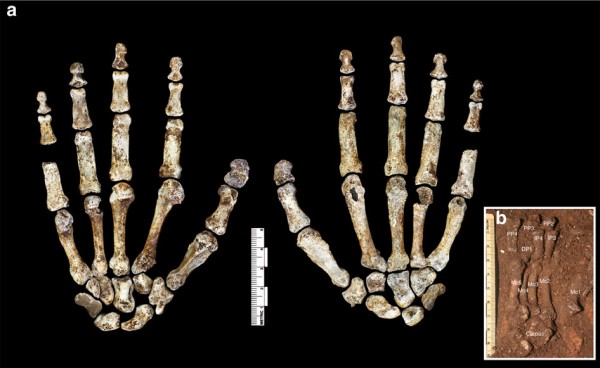New analysis of fossilized hands and feet of a recently discovered new human ancestor called Homo naledi found in a South African cave suggests that that these ancient humans can walk on the ground and yet climb above trees when necessary.
The feet of this human ancestor revealed adaptations, making them ideal for walking on open grounds where their hands still retained the ape-like characteristics of curved fingers for stronger grasping and holding onto tree branches, according to researchers.
According to William Harcourt-Smith from the American Museum of Natural History, Homo naledi's foot is actually more advanced compared to the other parts of the body such as the shoulders, skull and pelvis. Also, it is very advantageous to possess a very human-like foot since it was the foot that first evolved by losing primitive, ape-like features.
One of the major milestones of human evolution is walking upright where researchers in this study discovered that every piece of bone found in the foot of this new human species is crucial in gaining more insight about its movements like walking and running.
Scientists reveal that this ancient human shares a lot of similar features to the modern human foot, which points to evidence for early adaptations in standing erect and walking on both feet.
Harcourt-Smith further explains that how Homo naledi was on all fours, mostly on the ground during its time but when it was about to feed or escape from predators, it climbed high trees since it retained some primitive foot features meaning Homo naledi is almost bi-pedal, but not 100 percent.
In another study about the Homo naledi hand bones also found inside the same cave in South Africa, researchers pieced together a complete adult right hand and noted anatomical features not seen in any previous fossil evidence of early humans.
The hand features are similar with later Neanderthal hands and human hands, suggesting powerful grasps and the ability to utilize stone tools. According to Tracy Kivell of Kent University, the wrist features were only found in Neanderthals and modern humans which are used well for tools.
She adds that naledi could be using tools from different materials or are involved in forceful, precision grips but the most probable explanation would be its usage of tools and making them as well. These findings are published in the journal Nature Communications.


